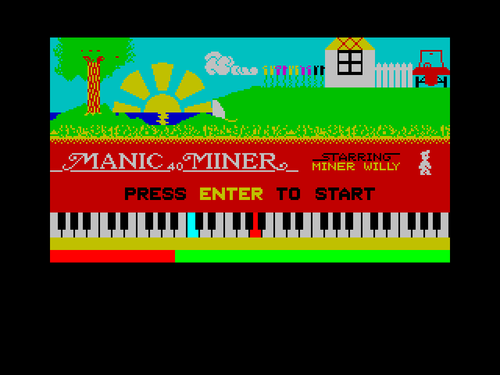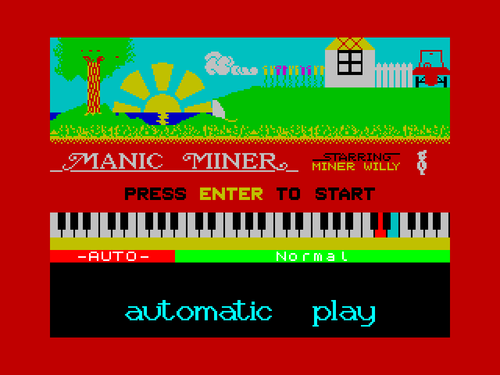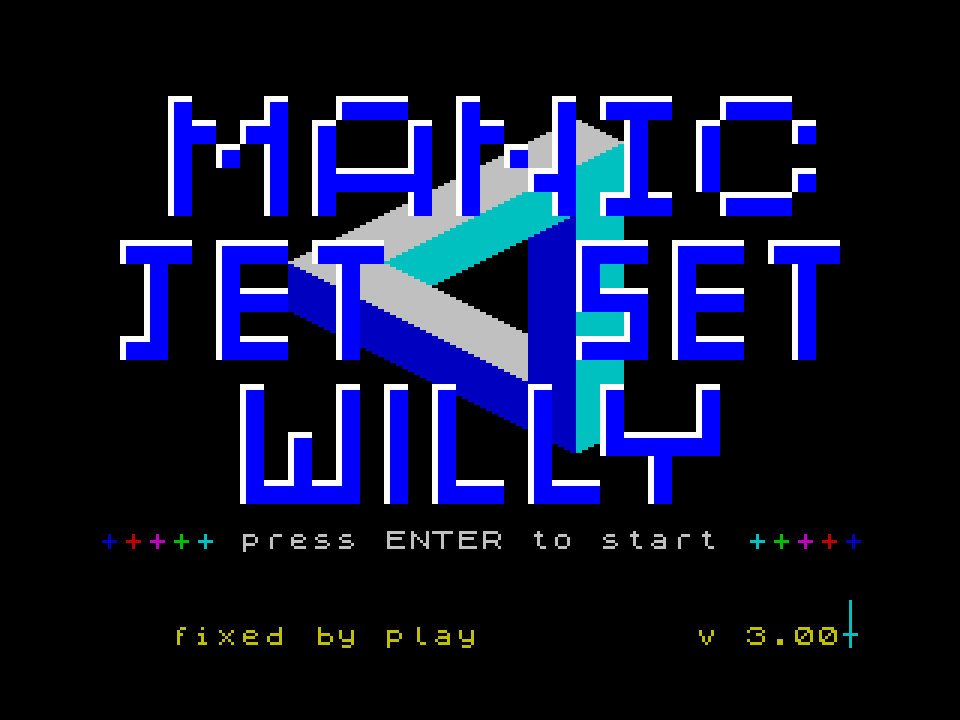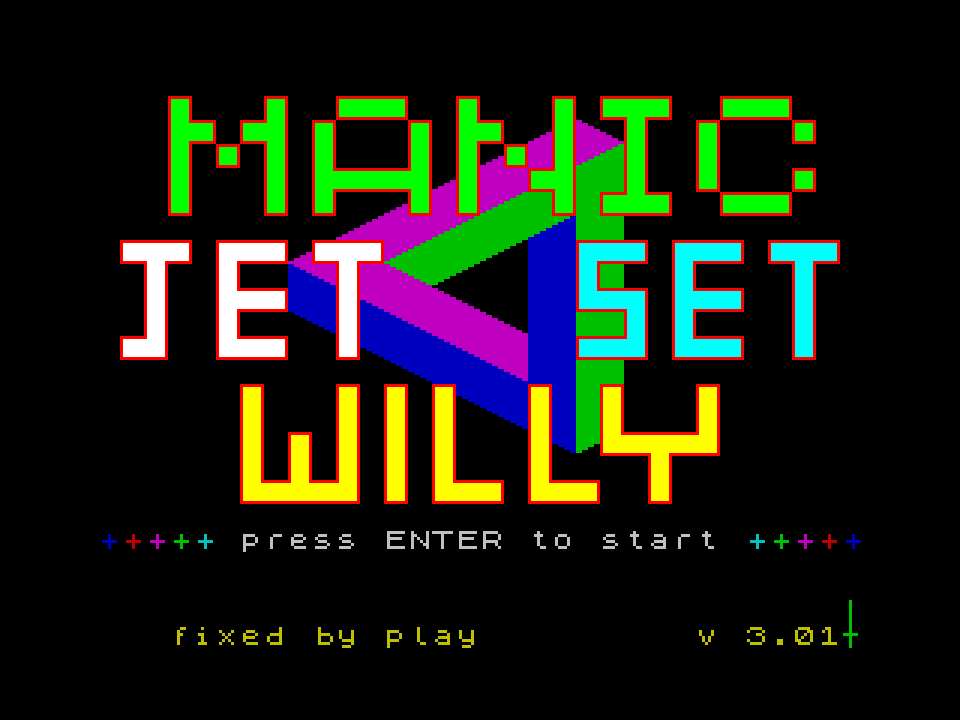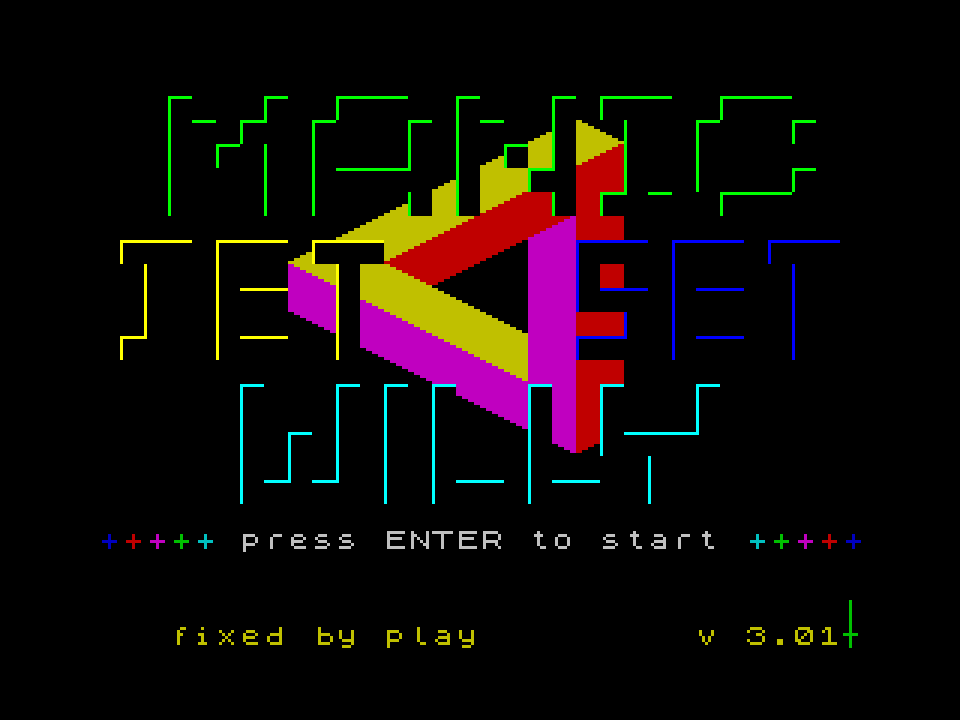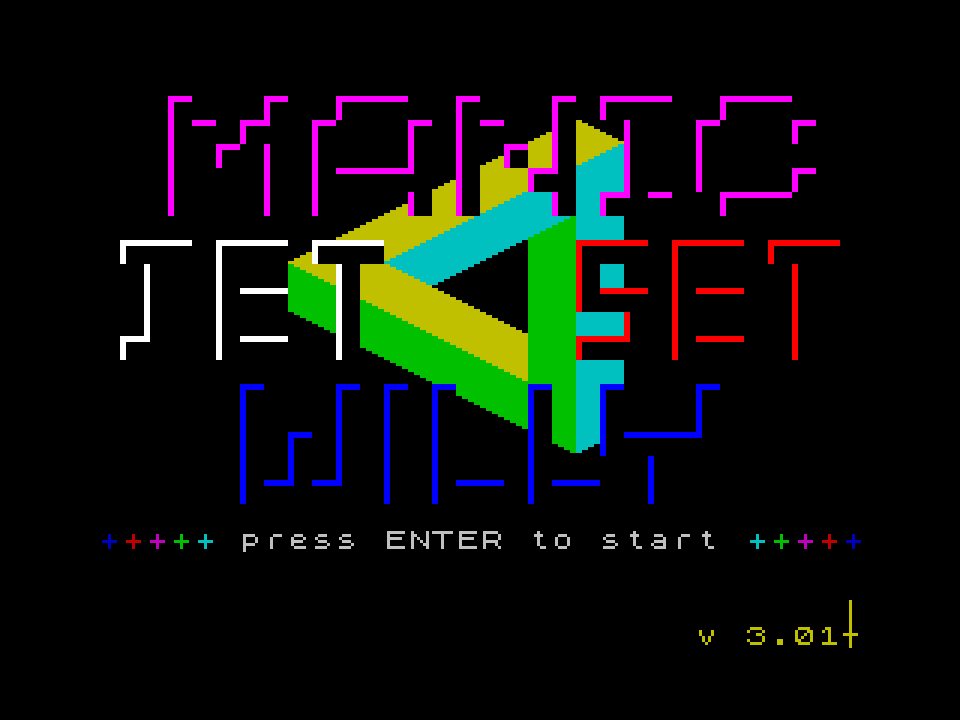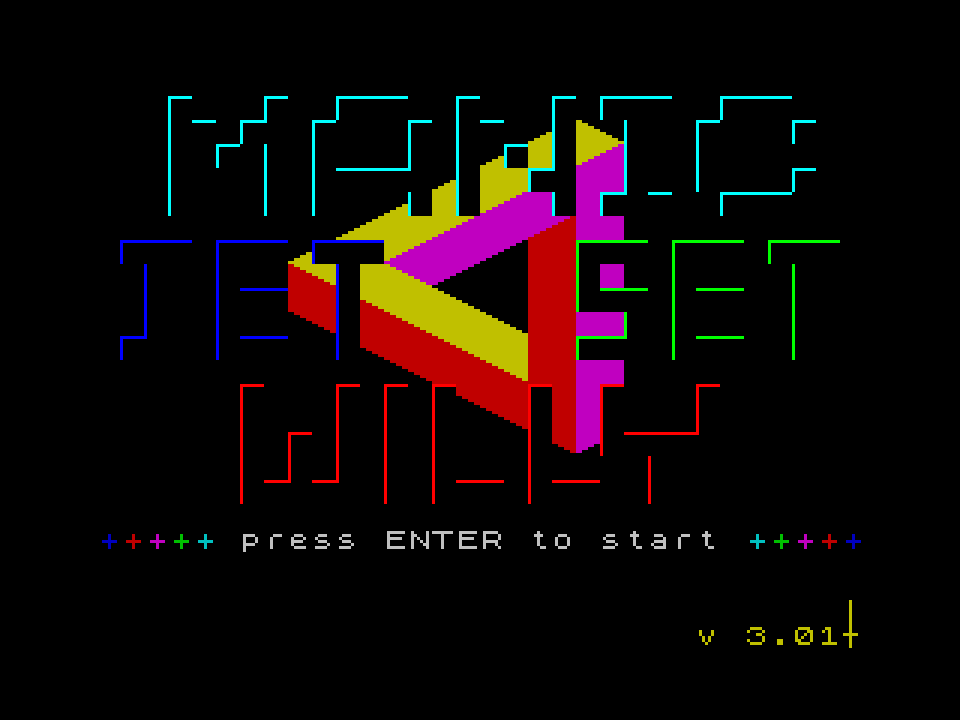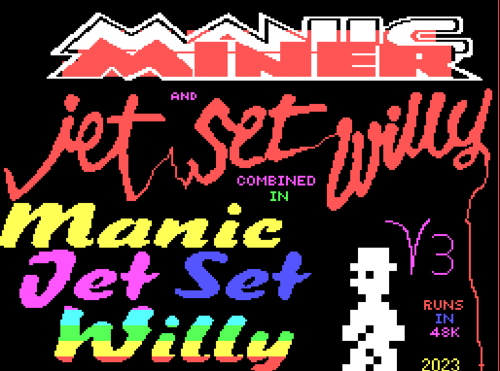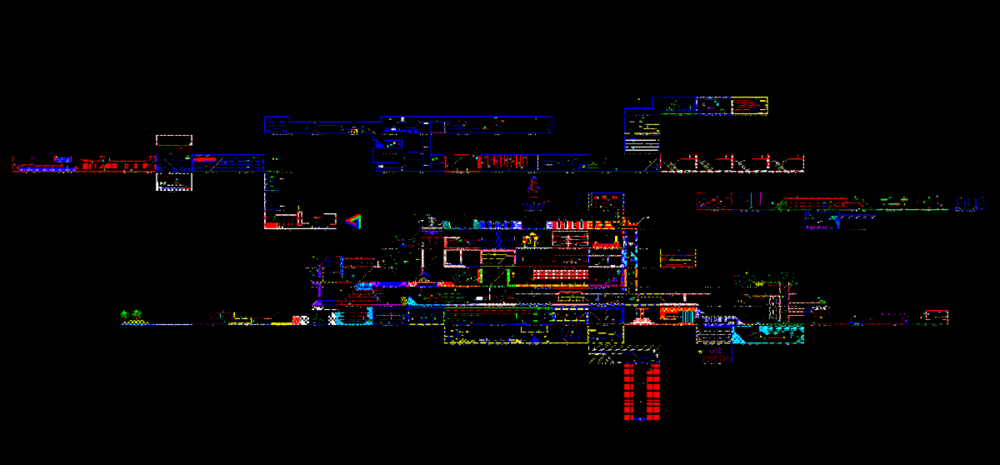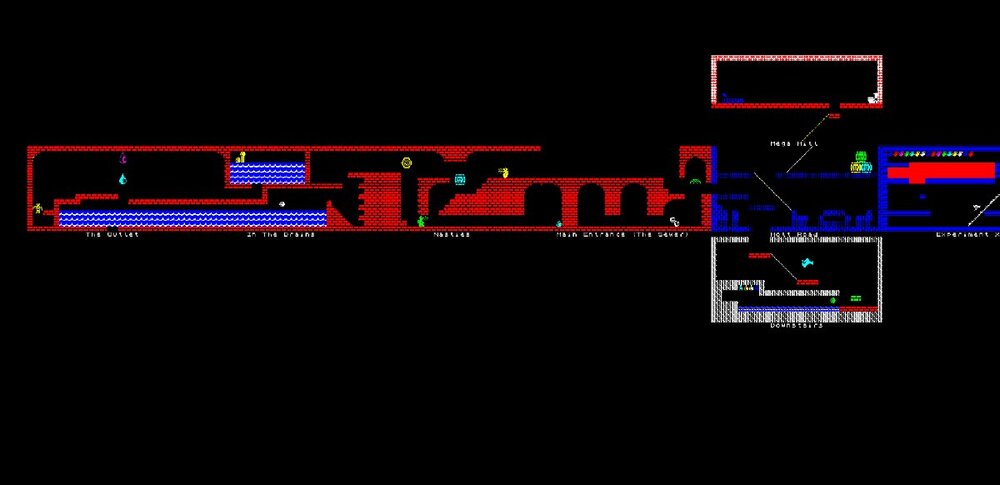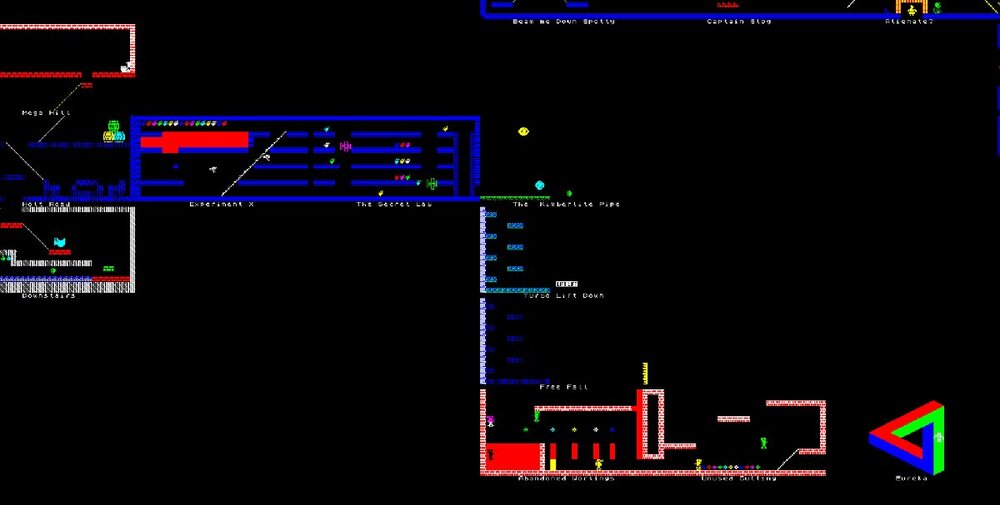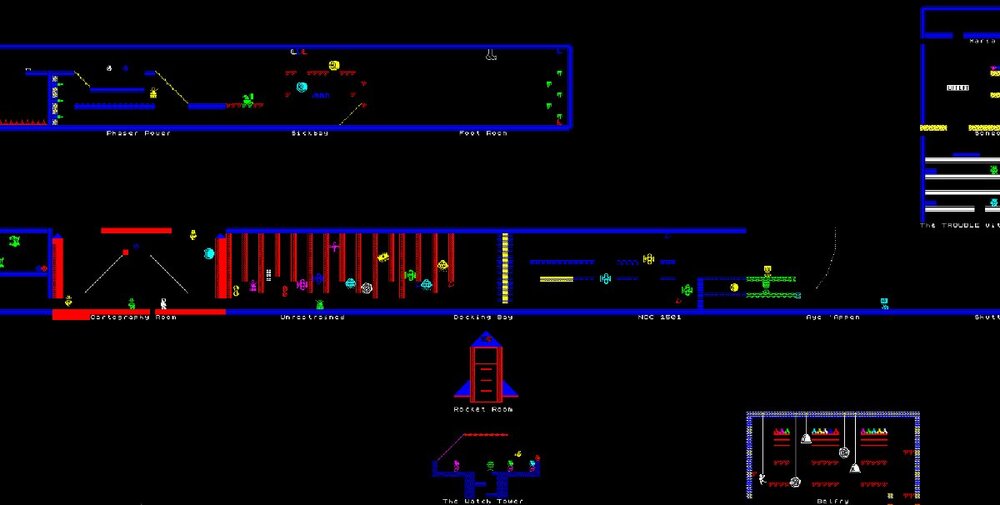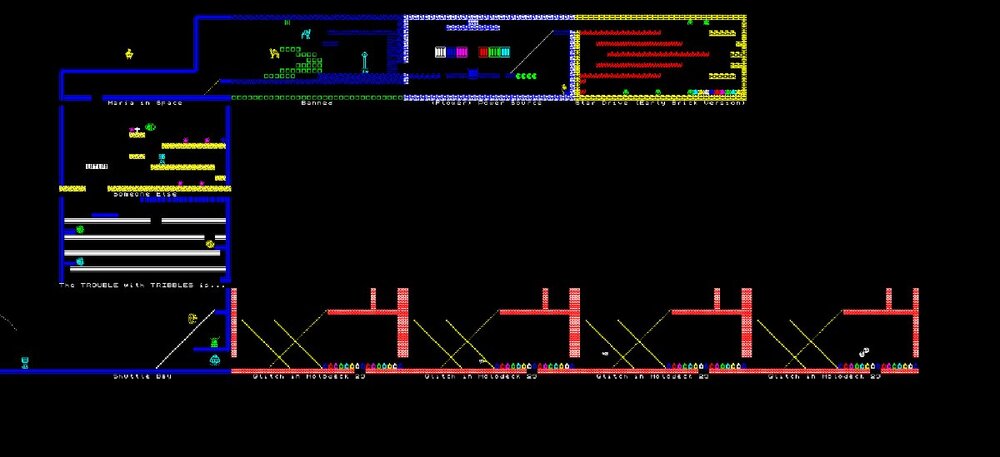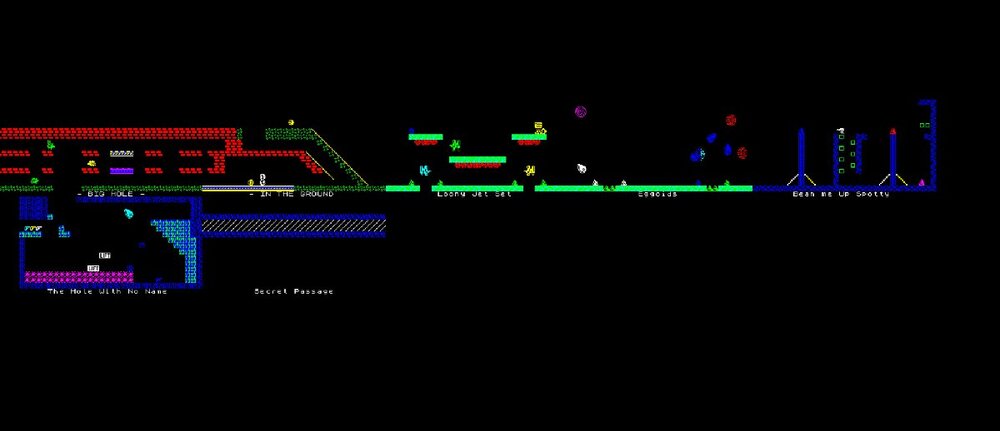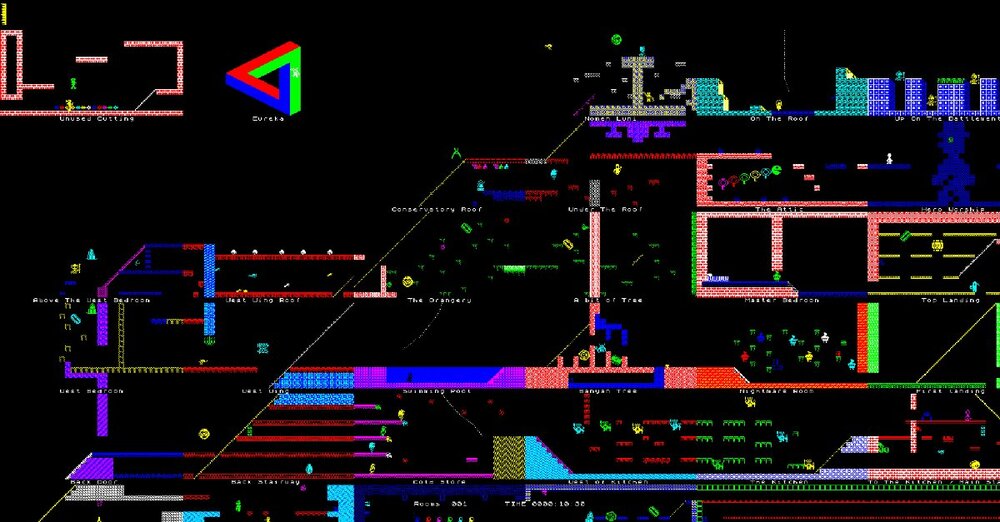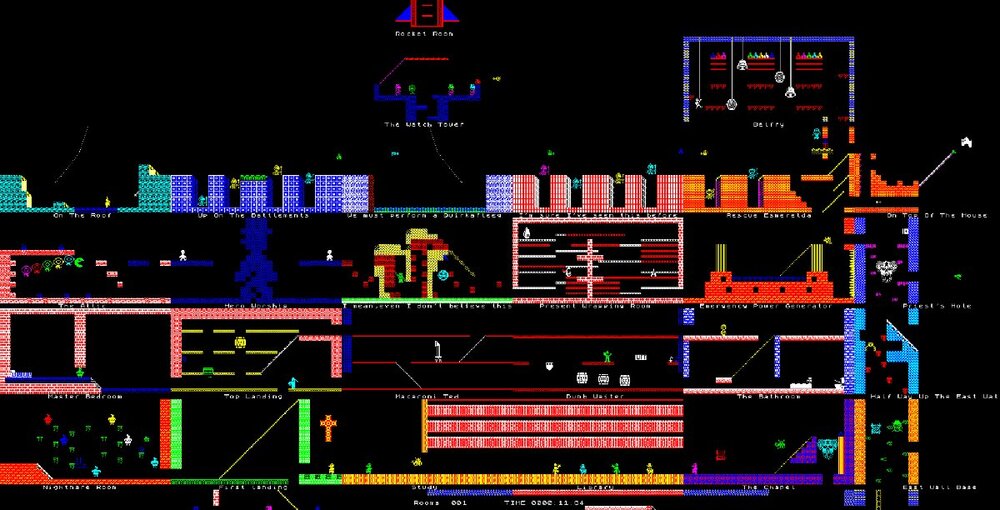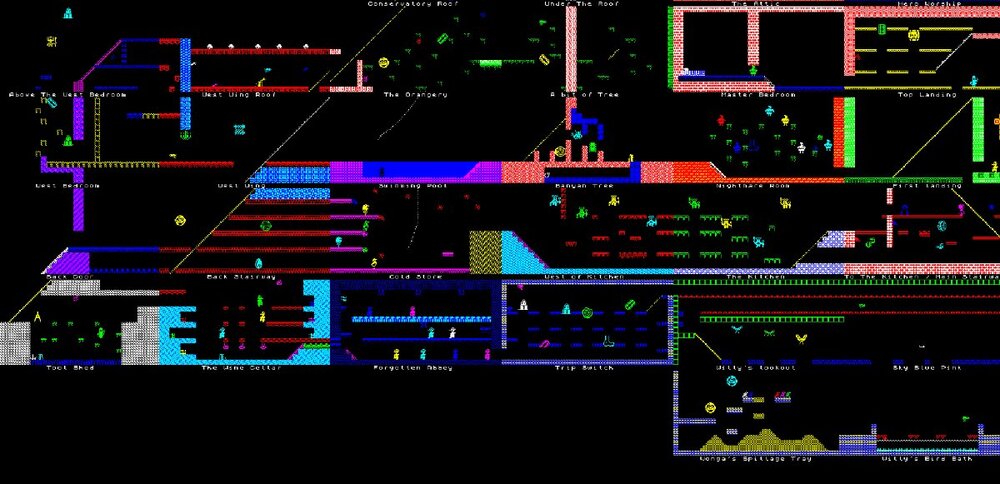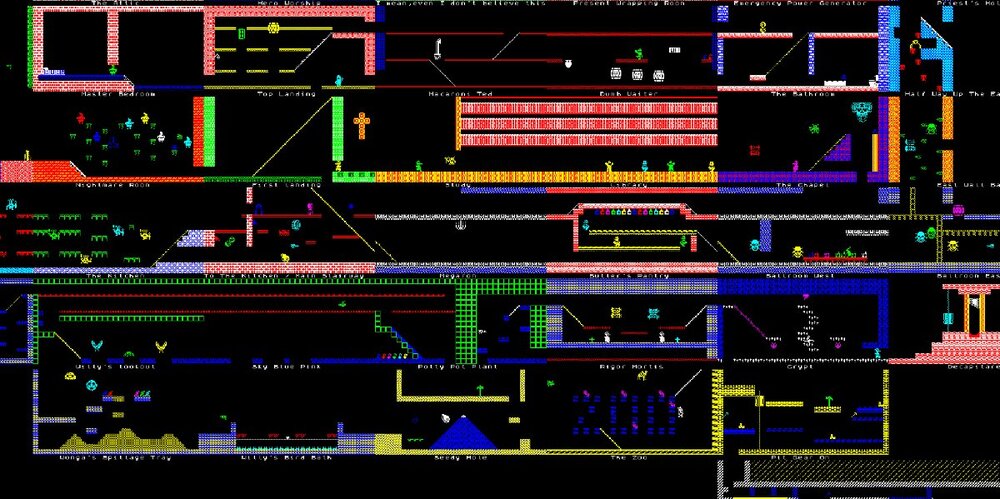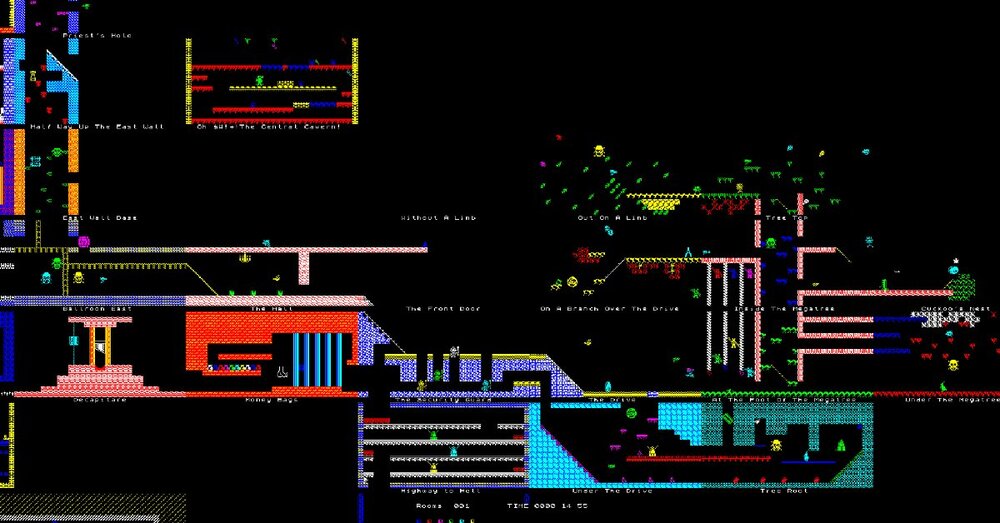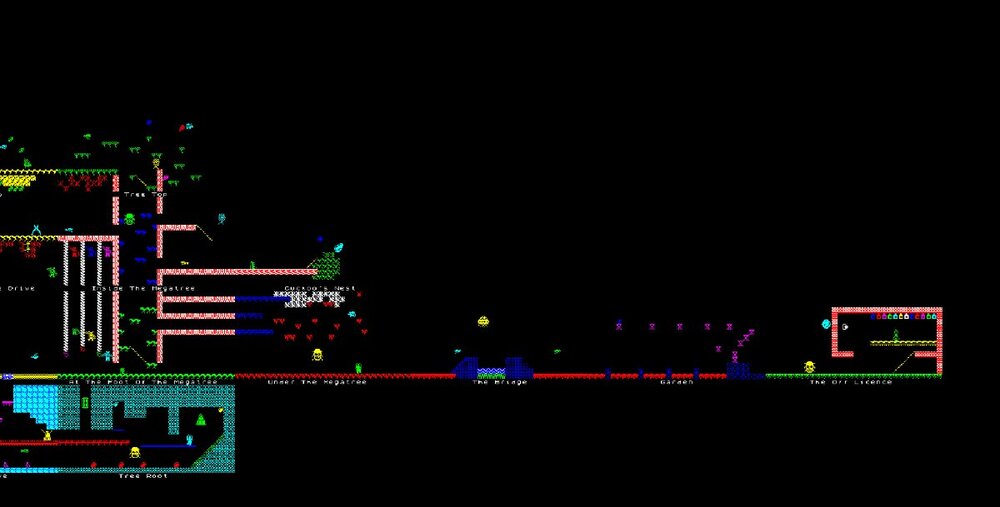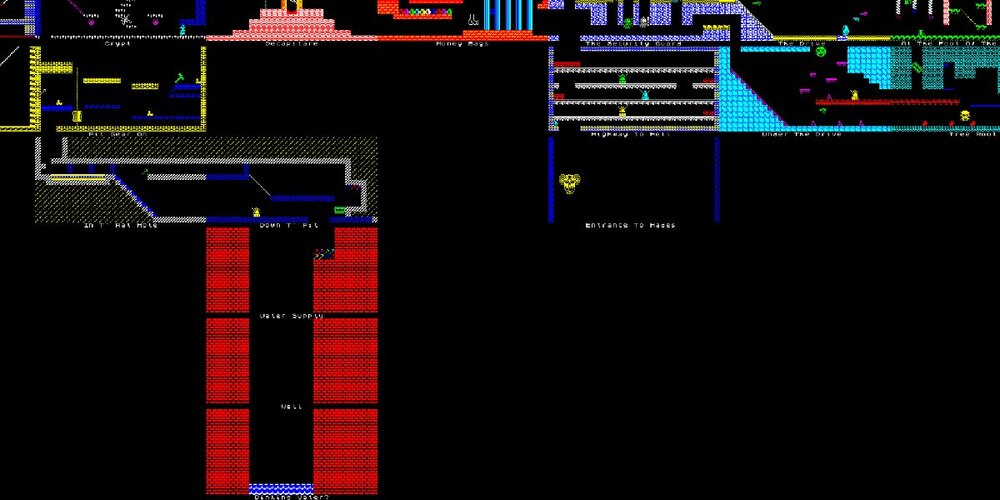-
Posts
619 -
Joined
-
Last visited
Everything posted by Norman Sword
-
Your cartography room shot, is missing the trip switch room/block. Which indicates it has not been registered as visited and also the item not collected.
-

Why was Manic Miner never properly optimised?
Norman Sword replied to Norman Sword's topic in Designer's Lounge
Was not aware Matthew wrote any other versions. Ist line I wrote Apologies to the original person who modified Matthews code. (see below)- 38 replies
-
- demo only
- optimisation
-
(and 1 more)
Tagged with:
-

Why was Manic Miner never properly optimised?
Norman Sword replied to Norman Sword's topic in Designer's Lounge
Which is my understanding of the problem. I will ignore the rest because it evolved into criticism of the journey I undertook to write the code. Followed by Defending a program that was not criticised. I simply made a statement in response to Spider extolling the said program..... It does not optimise MM and is just a simple editor. The same as I write this text in a simple editor that does NOT optimise MM. ---- Show me where that statement criticises the text editor I am using to write this text?- 38 replies
-
- demo only
- optimisation
-
(and 1 more)
Tagged with:
-

Why was Manic Miner never properly optimised?
Norman Sword replied to Norman Sword's topic in Designer's Lounge
JSWED has NO optimisation of code/data space in Manic Miner. It is a very simple data editor. So my statement still stands.- 38 replies
-
- demo only
- optimisation
-
(and 1 more)
Tagged with:
-
Apologies to the original person who modified Matthews code. (see below) Last week I wondered why Manic Miner has been left languishing as a little used format for code change. It seems the vast majority of game edits use the 64 room game version of Jet Set Willy as the basics for new games, and Manic Miner seems to have, in the main, been ignored. The limited scope of Manic Miner might be the reason, just 20 caverns, whilst JSW manages a max of 64 (on a 48k zx spectrum) I wondered if it was or would be easy to write a piece of code that compacted the game slightly. I personally have no need for such gimmicks. If I need more space, I will just rewrite the code. A quick rewrite as demonstrated in Manic 40 Miner takes very little effort. But I task myself with just writing code for the sake of writing code so, how hard is a universal compaction piece of code for Manic Miner? The answer is it took me a couple of hours to write a routine that compacted the game. It was at that point I delved into archives looking for versions to try my code on. That was when I discovered that the great multitude of Manic Miner versions I wanted to test my code on did not exist. I modified Matthews original code with no problem. I modified some other version - but that had no need of the addition I added (e.g. the font change) I knew of a recent listed modification of Matthews Manic Miner and that was used as a basis for demonstrating what the code I wrote could do. The version I decided to modify was Manic Person (human Version). So included here is a demonstration of the game -- Manic Miner -- Modified by a simple (for me) piece of code that does basic code modifications to the game. The demo does go a bit further and uses the freed space. The text added is deliberately long winded --- (it is just a demo of what can be done) The included demo - will be deleted in a week. It is NOT a version that is available for general public release. and has now been deleted ----- New code has been added (see addendum)- the new code is just the original Manic Miner Let the demo play through to the final cavern and on--- Ending the post. The universal code I wrote is in a format that will modify the basic code of Manic Miner and then return to Basic or Enter the modified game code and play the game. That code is not included here. The big question I ask myself is. Why has no one bothered to do this simple task? As stated elsewhere the code took just a few hours. ADDENDUM. Since this was missing a file demonstrating what I was talking about. A non edited version of Manic Miner has been run through my optimisation routine. Wait until the end of the 20 caverns to be displayed in the demo mode. THE text is in addition to other optimisations that have been performed. Note - this program has not been edited to fix any other code- so the pause bug and any other original problems, may still exist. MANIC-C.TAP
- 38 replies
-
- demo only
- optimisation
-
(and 1 more)
Tagged with:
-
Version V6c6
212 downloads
Manic 40 Miner This file is posted elsewhere --- Moved here because I found it very difficult to find --- After I stopped developing the JSW128 VK VL VM engine. I spent a week writing a version of Manic Miner called Manic 40 Miner. This does not contain any new rooms. They are the original and Ligans rooms. This means this version contains 40 caverns, starting with the original 20 caverns, then continuing on with another 20 caverns originally desisigned by Ligan. (of those 20 caverns, some have been redesigned by me) NOTE this runs in 48k the same as the original. This has a built in part game editor ---- Not enough space to add more scope, when the room/cavern count has been doubled. -----------------------------------------------------------------
- norman sword
- faster
-
(and 2 more)
Tagged with:
-
View File Manic 40 Miner Manic 40 Miner This file is posted elsewhere --- Moved here because I found it very difficult to find --- After I stopped developing the JSW128 VK VL VM engine. I spent a week writing a version of Manic Miner called Manic 40 Miner. This does not contain any new rooms. They are the original and Ligans rooms. This means this version contains 40 caverns, starting with the original 20 caverns, then continuing on with another 20 caverns originally desisigned by Ligan. (of those 20 caverns, some have been redesigned by me) NOTE this runs in 48k the same as the original. This has a built in part game editor ---- Not enough space to add more scope, when the room/cavern count has been doubled. ---------------------------------------------------------------- Submitter Norman Sword Submitted 04/11/2023 Category Manic Miner [Remakes]
- 3 replies
-
- manic miner
- 40 caverns
-
(and 2 more)
Tagged with:
-

JSW engine should pause briefly when you die
Norman Sword replied to Sendy The Endless's topic in JSW
Doing the drop through the Security Guard gains no advantage. The Wine Cellar still needs to be completed. And can not be completed in reverse.So what exactly are the benefits of using a life to gain no advantage. -
Just placing this at the start of a heading - so it is not swamped (or ignored). This replaces the code I deleted. I am nearing 70 and I leave for a quite life. Whilst I will still write code, it will be just for my own amusement. All Needed data are contained within the file. slide_platform.tap
-

Creating slippery "Ice" platforms
Norman Sword replied to Sendy The Endless's topic in Designer's Lounge
My last post ---- In exasperation - Troll away - -

Creating slippery "Ice" platforms
Norman Sword replied to Sendy The Endless's topic in Designer's Lounge
Deleted -

Creating slippery "Ice" platforms
Norman Sword replied to Sendy The Endless's topic in Designer's Lounge
Deleted -

Creating slippery "Ice" platforms
Norman Sword replied to Sendy The Endless's topic in Designer's Lounge
Deleted -

Creating slippery "Ice" platforms
Norman Sword replied to Sendy The Endless's topic in Designer's Lounge
Deleted -
Version 1.0.0
197 downloads
An extension for the automatic play version. In this version the game can be played in mono or as a block and block mono. Created around may 2021: To access the extended modes press "K" on the title screen. The keys in the option screen are all clearly shown. V=version - either bug byte or software Projects graphics and logic Z or X = change selected cavern L = play this cavern automatically H = play this cavern by scripted human play (still automatic) Enter = play as normal J = change the extended modes In the mono screens the colours can be changed by pressing 1 to change the background (paper), and pressing 2 to change the foreground(ink). The code will stop the ink and paper being the same. All the normal game keys-
- mono mode
- block mode
-
(and 3 more)
Tagged with:
-
View File Manic Miner with automatic play An extension for the automatic play version. In this version the game can be played in mono or as a block and block mono. Created around may 2021: To access the extended modes press "K" on the title screen. The keys in the option screen are all clearly shown. V=version - either bug byte or software Projects graphics and logic Z or X = change selected cavern L = play this cavern automatically H = play this cavern by scripted human play (still automatic) Enter = play as normal J = change the extended modes In the mono screens the colours can be changed by pressing 1 to change the background (paper), and pressing 2 to change the foreground(ink). The code will stop the ink and paper being the same. All the normal game keys Submitter Norman Sword Submitted 01/07/2023 Category Manic Miner [Remakes]
- 1 reply
-
- norman sword
- automatic play
-
(and 3 more)
Tagged with:
-
The JSW title screen has a lot of code creating the variances on the JSW logo. The colours (inks and papers) are mixed up by a randomising routine. Which just for the back ground penrose triangle can give 210 differing colour combinations. On top of those colour changes the text has differing effects and colour changes. So the colour combinations for the title screen should run into the thousands.
- 50 replies
-
- norman sword
- 48k
-
(and 3 more)
Tagged with:
-
Poor observation When the cash reaches £00000 a new life is not avaialable .... LOOK and observe the FLASHING £00000 value
- 50 replies
-
- norman sword
- 48k
-
(and 3 more)
Tagged with:
-
When the cash reaches £00000 a new life is not avaialable .... LOOK and observe the FLASHING £00000 value
- 139 replies
-
- jet set willy
- manic miner
-
(and 1 more)
Tagged with:
-
The version is now v3.01 ---- it managed to be just v3 from mid 2022 to jan 1st 2023 --- ... More haste less checks --- The edit I did was if object = nul ---- was changed from if object = 0 The edit does not give the same result It does however make the objects invisible ----
- 50 replies
-
- norman sword
- 48k
-
(and 3 more)
Tagged with:
-
Version v3 contains a last second edit of a macro routine. Why I edited the macro and then without testing, uploaded the file remains a mystery. I had not changed the macro in six months, and changed it just before assembly ----- No idea why.
- 50 replies
-
- norman sword
- 48k
-
(and 3 more)
Tagged with:
-
Version 3.0.1
2,171 downloads
The last version I do of the combined Jet set Willy and Manic Miner. Time wise I only spent a few weeks on the main code. Overall I just kept on changing the file and adding bits and pieces to the game. No overall attempt at changing the original game play. This file runs on a standard 48k spectrum and could have been released at the same time as the originals were released. Keys on title screen - <1> =change playing mode , <enter> = start game game keys - <enter> = toggle music on/off, <H> = faster game play, shorter music notes <J> = slower game play, longer music notes <ASDFG> = pause, - display the high score <QETUO> = Move left, <WRYIP> = move right, <ZXCVBNM>+<space> = jump. objective collect the flashing keys, and accumulate monies Difference from normal JSW and MM - A heavy fall or touching sprites or baddies will cost monies from Willies ready cash. The solar beam will cost a lot of monies on contact with Willy. Dropping Kong gains a lot of monies. But do keep an eye on your ready cash - when it has all gone - it is game over. This game is the compaction of Jet Set Willy and Manic Miner both originally 48k games. The compaction of the games allows for both to run (modified) in 48k.-
- norman sword
- 48k
-
(and 3 more)
Tagged with:
-
View File Manic Jet Set Willy V3 The last version I do of the combined Jet set Willy and Manic Miner. Time wise I only spent a few weeks on the main code. Overall I just kept on changing the file and adding bits and pieces to the game. No overall attempt at changing the original game play. This file runs on a standard 48k spectrum and could have been released at the same time as the originals were released. Keys on title screen - <1> =change playing mode , <enter> = start game game keys - <enter> = toggle music on/off, <H> = faster game play, shorter music notes <J> = slower game play, longer music notes <ASDFG> = pause, - display the high score <QETUO> = Move left, <WRYIP> = move right, <ZXCVBNM>+<space> = jump. objective collect the flashing keys, and accumulate monies Difference from normal JSW and MM - A heavy fall or touching sprites or baddies will cost monies from Willies ready cash. The solar beam will cost a lot of monies on contact with Willy. Dropping Kong gains a lot of monies. But do keep an eye on your ready cash - when it has all gone - it is game over. This game is the compaction of Jet Set Willy and Manic Miner both originally 48k games. The compaction of the games allows for both to run (modified) in 48k. Submitter Norman Sword Submitted 01/01/2023 Category Jet Set Willy [Remakes]
- 50 replies
-
- norman sword
- 48k
-
(and 3 more)
Tagged with:
-
When I finished version 1 of Manic Jet Set Willy. I was already aware of a problem - which was subsequently mentioned by others. The problem was caused by the editor having a column mode. Which I use occasionally to copy data and very rarely to delete data. The problem with using the column mode is the editor allows hard tabs and spaces to exist in the same text. The column mode struggles to understand where the visual columns are and as a result can do strange things. What it highlights and what it does are two differing things. At some stage during the last release of MJSW (Manic Jet Set Willy) I deleted a great quantity of old code and at the same time deleted a good deal of the comments that, due to editing, meant nothing for the code displayed. So I casually deleted a great deal of obsolete comments by using the column select and delete method. What I had not noticed was the delete has a bug in it. Which is different to the mess it normally creates. When a column is selected the program deletes all the data and can delete an extra byte on the last line. So it will correctly delete a column of 40 comments, but for the last comment deletes one byte extra. This was not noticed by me, and as I was at that time unaware of the problem (It was unusual usage from me) and it went undetected. What this did was it deleted a bit from a binary value. So:- (as an example) h_common: ld a,d ; transfer cp e ; limit jr nz,h_move ; h_reset: ld a,(ix+#00) ; data and %000$11111 ; mask is edited by the block delete to h_common: ld a,d cp e jr nz,h_move h_reset: ld a,(ix+#00) and %000$1111 which does not look a great deal different amongst 15,000 other lines of data and code. It does however create a bug. Since I had already stated I was not updating the code for a year. It also meant I was not updating the code I had written with a fix. -------------------------------- A few days after the release I decided to undertake a revamp on the method of compression. (not explained here) The revamp on the compression method allowed more free memory to be released. The chance to change the method of play and integrate the two parts was my next challenge. So a new version was undertaken at the end of December 2021 and completed before the end of the month in 2021. Since I was not releasing an update of V1 I decided that V2 would not be released until 12 months after V1. Since it is now December 2022, the file I wrote is included here. This file should have a loading picture. I have not attached the loading picture to the game update. I include here only a .PNG image of the loading picture taken from a zx spectrum screen. ------------------------------- Mid 2022 I was casually playing with data and sprites - and wondered if I could implement a new method of drawing the sprites which would also store the data differently. Over a couple of days I implemented the new method in JSW and in MJSW. It proved the concept worked and it also released more free memory. I have spent the last 6 months with the help of Spider changing V2 and adding a lot more data and graphics. The new version is known as V3. V3 is probably more in keeping with what I had originally planned on doing. V3 will be released Next year (probably Jan 1st 2023) Note - game wise V3 is only modified slightly from v2 - 4 more rooms and slight edits in some rooms- This was not meant to change the game play. The scope of the changes was adding graphics and making the transistions between screens more flowing. These versions contain both Manic Miner and Jet Set Willy. V3 contains more graphics than either of the original game versions. So the Manic Miner part of MJSW has all the necessary graphics of the original version. In a similar way the JSW part of MJSW has more graphics than the original JSW. In fact the JSW title screen has far more variaties than the same JSW title screen, and yet both the games of JSW and MM and comapcted to fit into the 48k of the original games. ------------------------------ Due to circumstances - this is my next to last game file post and the posting of V3 will be my last. ADDENDUM - I have found the original .scr spectrum screen for the .png picture. So I will add on here the .scr picture - should be attached to the start of the file and displayed as the primary loading screen. MJSw_v2.tap MSJS_PIC.scr
- 139 replies
-
- jet set willy
- manic miner
-
(and 1 more)
Tagged with:
-



